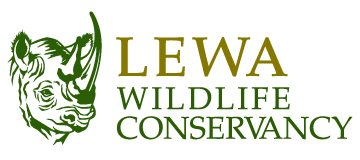There are various reasons for the present study. Some of the more obvious changes in habitat such as that of woody vegetation brought about (mainly) by elephant damage are evident throughout Lewa and there is a need to monitor this. However, some changes are less conspicuous. According to LWC, numbers of certain wildlife species such as waterbuck, warthog, gerenuk, plains zebra and Grevy’s zebra have declined over the past decade. The cause of this reduction is unclear, and although predation (mainly by lion) plays a role, it is thought (by Lewa management) that habitat change may also be a contributing factor, especially a decline in grazing value of grasslands. This idea of habitat change affecting numbers of certain is supported by the comparison with adjacent Borana Conservancy, where many decades of grassland management (by cattle grazing) has resulted in a mixed grassland with good cover and a more varied mix of grass species than common at Lewa, where much is dominated by (often moribund) wire grass Pennisetum stramineum and (to a lesser extent) bamboo grass Pennisetum mezianum. The recent mowing and experiments with localized intensive livestock grazing of grassland forms part of an attempt by LWC management to increase wildlife numbers by making grasslands more appealing to grazers such as zebras. In summary, there are two main reasons: i) assess the degree of (further) changes in woody vegetation since 2006, and ii) assess possible changes in the herbaceous layer (grasses and forbs) since 1979-80.
Related Posts
 ConservationLatest NewsLatest PublicationReports and Publications
ConservationLatest NewsLatest PublicationReports and Publications
Explore The Lewa Impact Report for The Year 2023
Lewa Communication TeamJanuary 3, 2024
 Latest NewsReports and Publications
Latest NewsReports and Publications
African Rhino Numbers on the Rise Despite Poaching Threats – IUCN
Lewa Communication TeamSeptember 26, 2023
 Featured PublicationLatest NewsReports and Publications
Featured PublicationLatest NewsReports and Publications
Peer Reviewed Papers
Lewa Communication TeamSeptember 18, 2023




